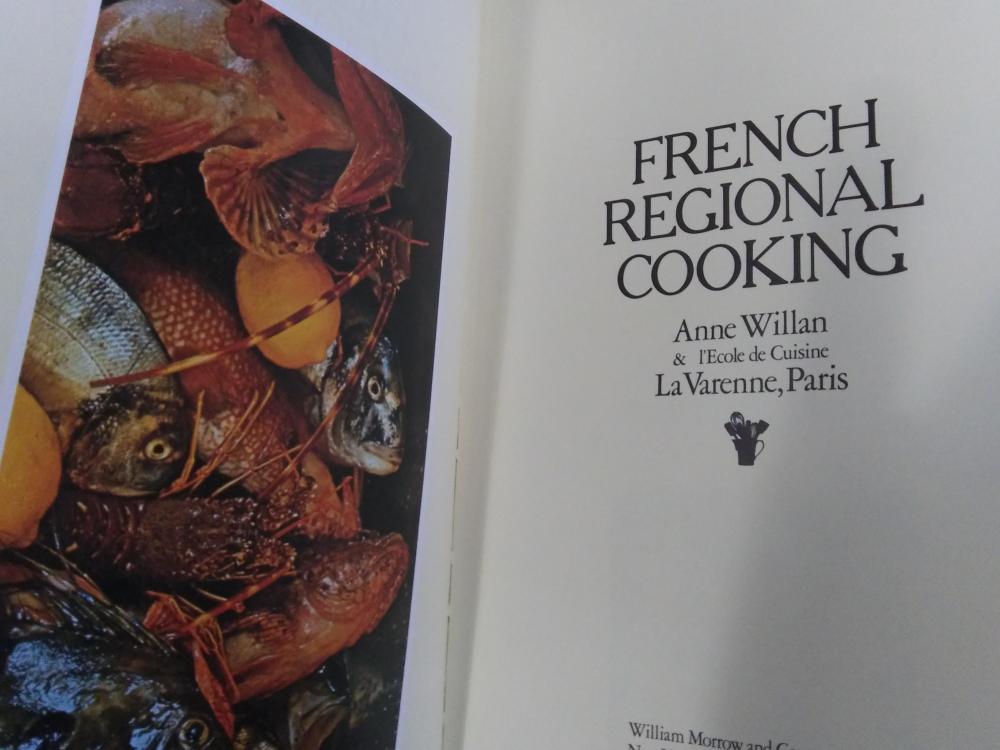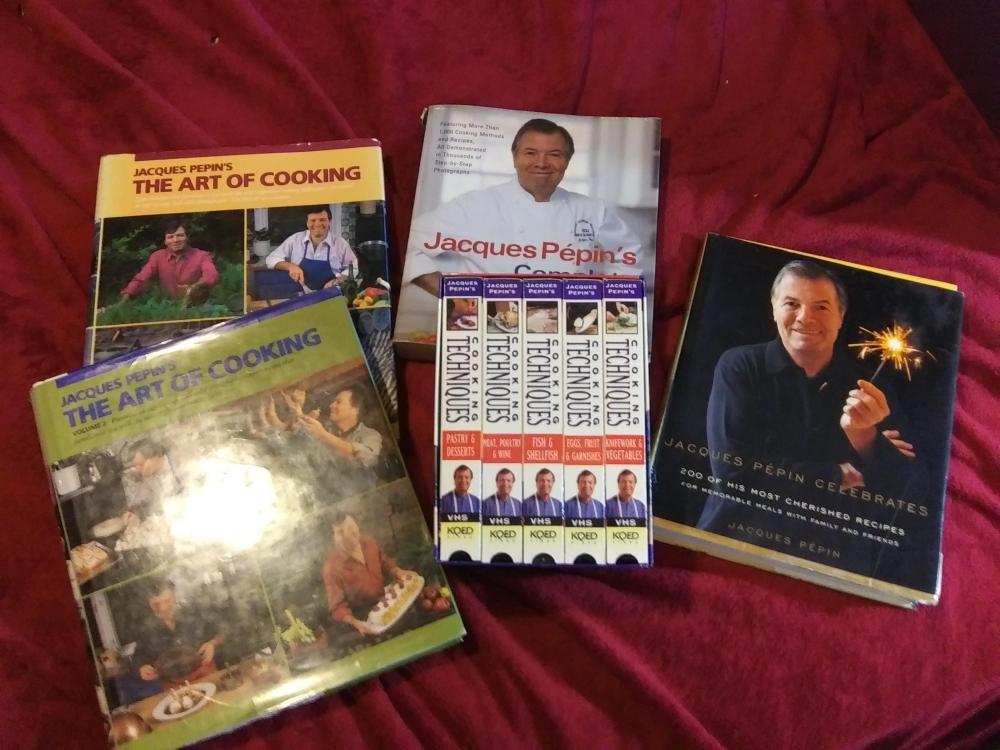-
Posts
895 -
Joined
-
Last visited
Content Type
Profiles
Forums
Store
Help Articles
Everything posted by paul o' vendange
-
Brother! That's two of us! I'm sure I'll make the move to at least a gyuto at some point. Even my MAC utility knife is nice with its thin, sharp blade. The Goldhamster heft is stout, agreed. I don't know if your handle is like this, but it also took some time (and blisters) for me to get used to the angled handle. Now that I've relied on it so long, though, it's natural to me. I don't know that I could ever use a santoku, though I know so many cooks like them. I also thought it would make a fine neck bone implement. And earned a dent (smaller, thank god ). Countless sharpenings later, it's barely evident. But learned my lesson. I use an F. Dick 7" cleaver. Though I'm so self conscious of our neighbors downstairs. They already love me for my levains and their 100's of FF's. I've always been curious about the Chinese cleaver, thanks for the idea. The F. Dick cleaver is about a kilo and has a rounded bevel edge, not sharp. TBH I love butchery and would love a good butcher's knife.
-

Wine pairing for caramelized carrot soup from Modernist cuisine
paul o' vendange replied to a topic in Cooking
As much as I love later Rieslings, I wonder if fabritius needs a bit more acid bite to balance out the sweetness? I'd think Gruner would be great, as would a dry Riesling. A chardonnay, not exceedingly fat, but giving some roundness and depth to match the richer sweetness - I'd think less "sugary" sweet, and more caramelization? I've seen some suggestions for reds, but I haven't tried it and can't get a bead in my head. -
I'm hopeless, man. 😆
-
I am, when I go through something like Craig Claibourne's Classical Cooking, and want to get really, really disappointed in myself. I will master 7 faces before I leave this mortal coil, dammit.
-
My chef's knife is an E. Schaaf Goldhamster. I don't remember named length but it's a large knife, 10" blade, 15.5" stem-to-stern. I use it for almost everything, including fine minces. I rarely use my paring knife - for some reason it's always felt weird in my hand, much more comfortable with the chef's knife. I use my Mac utility knife more than the paring knife. For turning I have a tourné knife.
-

Show us your latest cookbook acquisitions!
paul o' vendange replied to a topic in Cookbooks & References
-
Yeah, I hear you. Funny, I was thinking about just that as I as typing it. Not always! One that does come to mind is a magret with corn crepes and Michigan sour cherry duck sauce. Do you mean his "tomato tatin?" Love it. Braised lamb shoulder for some friends.
-
Agreed. "If it grows together it goes together" is a line that really stuck (I think that's in Think Like a Chef?). I also have his The Craft of Cooking. Second recipe - Porchetta, from a piglet!
-

Show us your latest cookbook acquisitions!
paul o' vendange replied to a topic in Cookbooks & References
Similarly afflicted. 😬 -
A touching memory from his book is when he finishes up his stint as the chef to President DeGaulle. They bring him to a room and it was just Jacques, Mr. and Mrs. DeGaulle, thanking him for being their chef.
-
Totally agree. If I remember correctly, this two-volume set are the books of which he's most proud.
-
That makes sense. His illustrations are delightful.
-
I can't find the book right now but now you have me searching. I've forgotten - one blessing of a faulty memory, laughing twice, lol!
-
I've got the "complete techniques" version now, but the La Technique original sure brings back memories. Here's my JP collection. I have The Apprentice somewhere but can't find it: I think it says a lot that Tom Colicchio lists La Technique and La Méthode as the books he used to teach himself to cook.
-

No No No, Stop It! The Bad Ideas Topic
paul o' vendange replied to a topic in Food Traditions & Culture
I learned a lot from my mom. Veggies and jello, and onion-apple pie, were not among them. 🤢 -
I love his decision to tweak the chef's consommé by stirring it. Seems the chef really appreciated the initiative.
-
I did a little digging. Not that it answers Honkman's (fair) point, but it may give a bit of background:
-

No No No, Stop It! The Bad Ideas Topic
paul o' vendange replied to a topic in Food Traditions & Culture
This was my hell as a kid. -
Jacques is so screwed.
-
I absolutely love Gregory. Nice to see.
-
That's a beautiful description. Thanks.
-
As a kid one summer vacation we houseboated around the Sacramento River Delta. Large Asian community and lots of stores, from a very young memory. First taste of lychee, but only dried. What are the qualities of the fresh?
-

Show us your latest cookbook acquisitions!
paul o' vendange replied to a topic in Cookbooks & References
That's perfect, thanks! These are the cookbooks I treasure most. -

Show us your latest cookbook acquisitions!
paul o' vendange replied to a topic in Cookbooks & References
I really like her bio, Blood, Bones & Butter. I love her saltiness. I passed on Prune but you've got me intrigued, now. Thanks. -

Show us your latest cookbook acquisitions!
paul o' vendange replied to a topic in Cookbooks & References
Maida Heatter's Cakes (thanks @heidih) Rose Levy Barenbaum's Cake Bible (thanks @weinoo)(Hmm. I'm sensing a trend here. Namely, I've always sucked at cakes). "Un artiste au Grand Véfour," by Guy Martin. I have several others by him, including the massive and gorgeous Le Grand Véfour. I think his, Georges Blanc's, and Roger Vergé's are my favorite French chef's cookbooks. Frédy Girardet gets the Swiss nod. Let's Eat France!: 1,250 specialty foods, 375 iconic recipes, 350 topics, 260 personalities, plus hundreds of maps, charts, tricks, tips, and ... you want to know about the food of France," by François-Régis Gaudry. Looks goofy, pretty exhaustive, and a lot of fun. The Cook and the Gardener, by Amanda Hesser. I love narrative cooking books like this, and especially love "a year in....." books that chronicle the changing mood as well as produce of the seasons; this one promises to be a good one.







